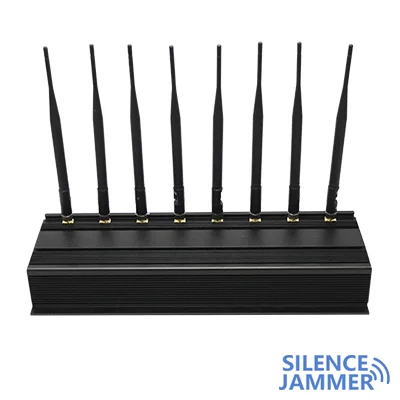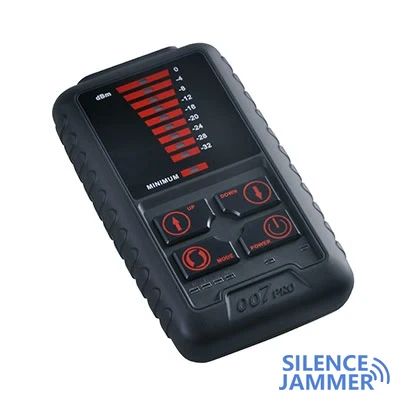In recent years, improvised explosive devices (IEDs) have become a common attack method used by terrorists and insurgents, especially in war-torn areas. Criminals can remotely detonate bombs through mobile phones and other wireless devices, making the threat of IEDs even more unpredictable.
The operating principle of IEDs is simple: connect the explosive device to a mobile phone, and use mobile phone calls or text messages to trigger electric detonators, thereby detonating the explosives, so IE signal jammer devices were invented.
The deadly threat of mobile phone remote-controlled IEDs
"Dial bombs" are extremely powerful, especially in conflict areas such as the Middle East. Terrorists often use large-caliber artillery shells to make bombs, which are filled with large amounts of TNT explosives. The power of this type of IED is so great that even armored vehicles and main battle tanks cannot withstand it. For example, Israel's Merkava tanks and Saudi Arabia's M1A2 main battle tanks have been blown up by IEDs, and the impact of the explosion can even blow the tank turrets dozens of meters away.Many countries have begun to use signal jammer devices to deal with bomb threats.

The remote control principle of IED is relatively simple, and it is usually detonated by mobile phones. Terrorists will remove the speaker or vibration motor of the mobile phone and connect it to the electric detonator. When someone calls the phone, the current flows through the wire, triggering the detonator to detonate the explosives.
Although this detonation method is simple, it has a major flaw: any incoming call will detonate the bomb. Therefore, terrorists usually choose mobile phones that can be set up with a whitelist to prevent accidental detonation. In addition, there are more advanced methods, such as triggering the detonation through specific text messages, which requires customized mobile phone software.
Countermeasures of the US military and other armies
- Enhance vehicle protection: By strengthening the defense capabilities of tanks and armored vehicles, developing mine-resistant personnel carriers with V-shaped explosion-proof chassis to improve protection against IED explosions.
- Pre-clearance of threats: Using helicopters and tanks to clear suspicious targets before combat to reduce the possibility of IED installation and detonation.
- Electronic countermeasure technology: Using IED signal jammers to block radio communications between remote control devices and IEDs by emitting jamming signals to prevent bombs from being detonated.
- Bomb disposal protection measures: Initially, signal jammer devices were used in the bomb disposal process to prevent the enemy from detonating bombs through remote control devices during bomb disposal. Now they have become conventional defense equipment.
Innovative defense methods of Chinese peacekeeping forces
The Chinese infantry battalion performing peacekeeping missions in South Sudan has adopted a low-cost and effective defense measure-vehicle-mounted mobile phone signal jammers. These jammer devices can block mobile phone signals within a certain range, prevent IEDs from being detonated remotely by mobile phones, and eliminate the possibility of remote detonation from the root. This method is not only low-cost, but also very practical, and effectively reduces the threat of remote-controlled IEDs.
Development and deployment of signal jammer devices in the U.S. military
In order to better deal with the threat of remote-controlled IEDs, the U.S. military has developed and deployed a variety of jammers.
| Vehicle-mounted jammer device deployment | The U.S. military has developed and deployed vehicle-mounted jammer devices such as the Chameleon and Duke, which can block wireless signals around convoys and prevent IEDs from being remotely detonated. |
| Man-portable jammers | The portable Guardian signal jammer was developed to provide radio signal protection for infantry, ensuring that they are protected from the threat of remote-controlled IEDs while on the move. |
| Large-scale deployment | By the end of 2007, the U.S. military had deployed more than 30,000 signal jammer devices, significantly reducing the risk of attacks by mobile-controlled IEDs. |
| Response to new threats | As terrorists gradually turn to wired control, timed explosions, and suicide attacks, the U.S. military recognizes that combating IEDs remains a long-term challenge and requires continuous upgrading of technology and tactics. |
Although signal jammer blockers have achieved significant results in combating remote-controlled IEDs, terrorists are also constantly developing new triggering technologies, such as wired detonation and complex timing devices. Dealing with the threat of IEDs requires not only technological advances, but also a more comprehensive strategy, including intelligence collection, early warning systems, and personnel training. In the future, as technology further develops, jammers will continue to play an important role in combating IED threats and provide stronger protection for troops and peacekeepers.





